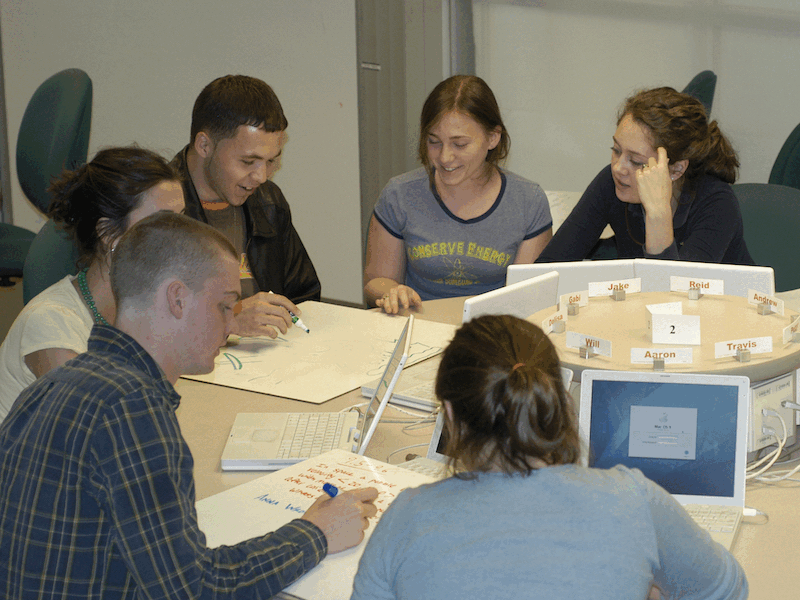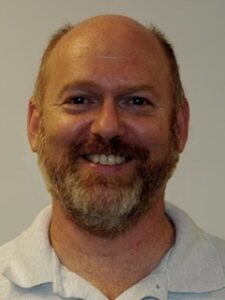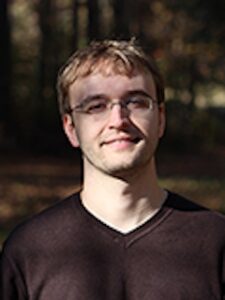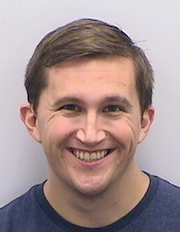About

Welcome to the NC State Physics Education Research Group! Our faculty members and graduate students constitute one of the most well-known and respected PER Groups in the nation. Historically, we have made significant contributions to the field in assessments such as TUG-K and BEMA; we have made curricular contributions, such as the development and implementation of the Matter and Interactions curriculum; and we are the originators of the SCALE-UP studio classroom environment. Our faculty and graduate students have also contributed to the development of WebAssign and visualization software such as VPython and VideoGraph. The APS journal Physical Review: Physics Education Research originated here.
We have varied interests including assessments, problem-solving, visualization, and pedagogical and curricular reform. If you’re interested in joining or visiting us, please don’t hesitate to contact us!
WHAT IS PER?
We do research on the teaching and learning of physics. Then we develop teaching techniques and technologies that use what we discover to improve learning.
There are two basic types or “flavors” of PER–Physics Education Research. We often carry out “Mixed Methods” studies that combine the two approaches, taking advantage of the best features of each and avoiding most of their limitations.
The first type of research is Quantitative. As you might guess from the name, it deals with numbers. Typically, students are given some kind of test to partially reveal what they know or think about some physics topic. The advantage is that you can give these assessment instruments to thousands of students, and use statistics to generalize your findings. A disadvantage of this approach is that you don’t gain much insight into what an individual student is thinking. In other words, the resolution is poor.
The second research method is called Qualitative. It is commonly done by interviewing individuals or groups of students. Because you can ask follow-up questions, you can acquire a lot better grasp of what any one student is thinking. Unfortunately, you can easily become so inundated with rich, detailed data that it can be hard to analyze. It is also difficult to generalize your findings to other students. Now you see why some of the best studies combine both research techniques!
WHO WE ARE
 Bob Beichner |
 Michael Paesler |
 Mike Wilson |
 William Lo |
 Nick Gray |
 Alumni & Friends |
WHAT WE DO
Research Papers |
Our primary mission is to conduct research on the teaching and learning of physics. |
Teachers’ Articles |
We’ve produced curricular materials to help classroom teachers implement active learning. |
Dissertations |
Many graduate students have completed our program and gone on to impact the field. |
Assessment Instruments |
We have developed and evaluated a sizable number of conceptual tests. |
Classroom Designs |
We offer assistance to faculty, administrators, architects, and companies as they intentionally design instructional spaces. |
Books and Chapters |
Sometimes there is more to share than will fit in single article. When this happens, group members work with commercial publishers to disseminate detailed information about their work. |
Electronic Publications |
We embrace modern means of sharing our efforts via custom-written software and internet websites. |
HOW WE DO IT
QERL |
We have one of the best Qualitative Education Research Labs in the world. It also houses a LearningGlass video studio. |
SCALE-UP Classrooms |
We are the only place on the planet with 4th generation SCALE-UP classrooms. |
WebAssign |
We created the largest web-based homework system in existence and can use it for research purposes. |
GlowScript |
We have experts in GlowScript and VPython programming. |
STEM Education Initiative |
We have colleagues in multiple departments and colleges who are also working on discipline-based educations research. |
DELTA |
The University provides extensive technology-oriented assistance. |
SAS & JMP |
Since the largest privately owned software company in the world is an NCSU spin-off, we have free access to their statistical analysis programs. |